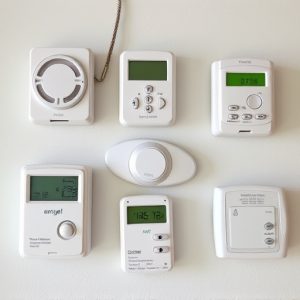Maximizing Decibel Personal Alarms: Safeguarding Lone Workers
In today's digital age, protecting lone workers is paramount across various sectors, especially…….
In today's digital age, protecting lone workers is paramount across various sectors, especially in remote or noisy settings where traditional safety measures may fail. Maximum Decibel Personal Alarm Safety systems offer immediate, loud alerts (120+ dB) that cut through noise, enabling swift reactions to potential dangers. Key features include durable designs, easy activation, long-lasting batteries, water resistance, strobe lights, and integration with tracking technology for real-time location data. Effective implementation requires strategic selection, worker training, regular testing, optimal placement, and fostering a culture of comfortable alarm usage, enhancing safety in diverse scenarios.
In today’s fast-paced work environment, lone workers face unique challenges. The absence of immediate assistance highlights the critical need for effective safety alert systems. This article explores the importance of maximum decibel personal alarm safety systems designed specifically for lone workers. We delve into key components, best practices for implementation and usage, ensuring workers can signal distress promptly and reliably. Understanding these aspects is vital to enhancing workplace safety and well-being.
- Understanding the Need for Lone Worker Safety Alert Systems
- Key Components of a Maximum Decibel Personal Alarm System
- Best Practices for Implementing and Using Personal Alarms Effectively
Understanding the Need for Lone Worker Safety Alert Systems
In today’s digital era, ensuring the safety of lone workers is a critical concern for many industries. These individuals, often working independently in remote or high-risk environments, face unique challenges and potential dangers that require specific attention. The need for effective safety alert systems has become increasingly evident as statistics show a rise in accidents and incidents involving solo employees. Traditional methods may not always be sufficient to grab the attention of someone working alone, especially if they are focused on a task or in an area with background noise.
Maximum Decibel Personal Alarm Safety systems play a pivotal role here. These devices are designed to provide a powerful, immediate alert to lone workers, ensuring they can quickly respond to potential hazards. With a focus on high decibel levels, these personal alarms can cut through noise barriers and capture the attention of individuals who might otherwise be unaware of an impending risk. Such systems are game-changers in fostering safety, especially in vibrant, bustling work environments where communication may not always be immediate or reliable.
Key Components of a Maximum Decibel Personal Alarm System
A maximum decibel personal alarm system for lone workers is a critical component in ensuring their safety. These systems are designed to be loud, typically reaching 120 decibels or more, to attract attention quickly and effectively. Key components include a durable, compact alarm device that can be easily carried or attached to clothing, along with a reliable activation mechanism such as a push button or a pull cord.
The alarm should also feature a long-lasting battery life, water resistance for outdoor use, and a strobe light to enhance visibility in low-light conditions. Additionally, integration with tracking technology or emergency services can provide real-time location data and prompt assistance in case of distress. These features collectively contribute to the overall effectiveness of the maximum decibel personal alarm system in safeguarding lone workers.
Best Practices for Implementing and Using Personal Alarms Effectively
When implementing personal alarm systems for lone workers, it’s crucial to establish best practices that ensure their effectiveness and reliability. Start by selecting alarms with a maximum decibel level tailored to the environment; high-decibel alarms are essential in noisy or remote settings to guarantee audibility. Train workers on proper usage, emphasizing the significance of immediate activation upon encountering an unsafe situation. Encourage regular testing and maintenance to keep alarms in optimal condition.
Placement is key; ensure alarms are easily accessible and attached securely to clothing or equipment. Foster a culture where workers are comfortable activating alarms without hesitation. Regularly review and update safety protocols, involving the lone workers themselves for valuable insights. This collaborative approach enhances overall safety by making sure alarms are used appropriately and effectively in diverse scenarios.
Lone workers face unique risks, making maximum decibel personal alarm systems an indispensable tool for their safety. By understanding key components and implementing best practices, organizations can ensure these alarms are effective and empower employees to protect themselves in emergencies. Investing in robust safety alert systems is a vital step towards creating a safer working environment for isolated individuals.

